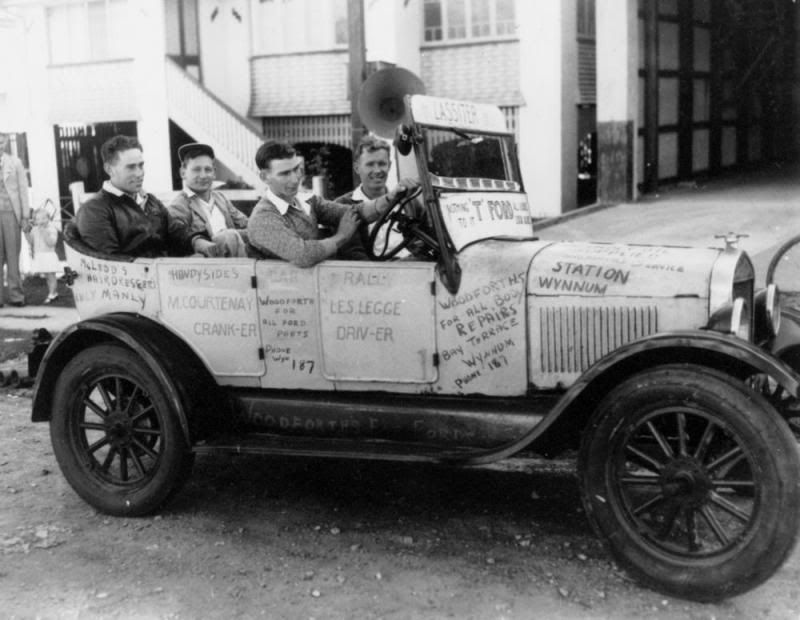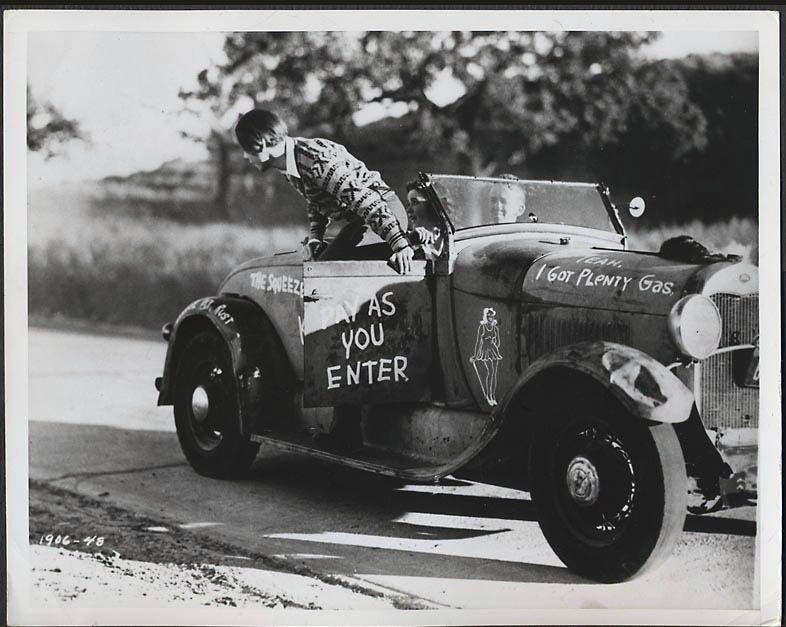BellyTank
I'll Lock Up
- Messages
- 7,061
Austin Sevens still aren't exactly rare- they were produced in great numbers, from 1922-1939. They were also the basis for other "marques" product-
JAguar, BMW, Nissan, etc. Specials were being made in the '30s and were very popular even through the '60s and '70s. where they remained popular and cheap. Thee has, for a long time, been a racing formula based on the Autin Seven, which is still popular to this day. The first Lotus was Austin Seven based- Lotus MkI. It's funny to think of Lotuses having a 750cc sidevalve engine. The Lotus 6(not MkVI) had a bigger engine, the Ford sidevalve, 1172cc. The guy who is building the car I pictured, built a Lotus 6, a few years back, a very cool car, with a Lotus "works" engine.
There were "kit cars" available and small auto engineering companies offering
alternative bodywork and unique bodies, from the late '40s, all the way through the '60s. Same goes for Ford 10 based specials and sports cars-
the Buckler being a famous example.
An Austin Seven Special can be a lot of fun to drive- 60mph seems pretty fast and it's pretty much the speed limit anyway. They are so small, 6" odd
and the chassis is actually about the same- the heaviest part of the rolling chassis, the engine, even with gearbox attached, can be lifted comfortably by one person due to the aluminium crank case and gearbox(the front beam axle, with one hand!). A special can be built very cheaply and the bodywork is up to one's imagination. A very affordable and achievable "hot rod" project, which takes up very little space. Much of the science and logic for safety- steering, suspension and handling can go out the window, in a car of extreme low weight and "limited" power. Lightness is the point. Parts and running costs are affordable- fuel consumpion neglible.
I have distant plans for an Austin* Seven Special(not SUCH an inexpensive one); A7 chassis, lengthened/strengthened, in order to achieve a more balanced body style, equipped with a *Riley twin cam engine, lengthened bonnet/cowl and unique, hand formed aluminium coachwork on a wooden frame. A lot more power available with the Riley engine- still a classic, '30s, British engine. The idea is to make a totaly viable '30s style special, with '30s parts but a bit more performance than an A7 and a bit longer.
A could-have-been car.
Enough of my rambling-
B
T
JAguar, BMW, Nissan, etc. Specials were being made in the '30s and were very popular even through the '60s and '70s. where they remained popular and cheap. Thee has, for a long time, been a racing formula based on the Autin Seven, which is still popular to this day. The first Lotus was Austin Seven based- Lotus MkI. It's funny to think of Lotuses having a 750cc sidevalve engine. The Lotus 6(not MkVI) had a bigger engine, the Ford sidevalve, 1172cc. The guy who is building the car I pictured, built a Lotus 6, a few years back, a very cool car, with a Lotus "works" engine.
There were "kit cars" available and small auto engineering companies offering
alternative bodywork and unique bodies, from the late '40s, all the way through the '60s. Same goes for Ford 10 based specials and sports cars-
the Buckler being a famous example.
An Austin Seven Special can be a lot of fun to drive- 60mph seems pretty fast and it's pretty much the speed limit anyway. They are so small, 6" odd
and the chassis is actually about the same- the heaviest part of the rolling chassis, the engine, even with gearbox attached, can be lifted comfortably by one person due to the aluminium crank case and gearbox(the front beam axle, with one hand!). A special can be built very cheaply and the bodywork is up to one's imagination. A very affordable and achievable "hot rod" project, which takes up very little space. Much of the science and logic for safety- steering, suspension and handling can go out the window, in a car of extreme low weight and "limited" power. Lightness is the point. Parts and running costs are affordable- fuel consumpion neglible.
I have distant plans for an Austin* Seven Special(not SUCH an inexpensive one); A7 chassis, lengthened/strengthened, in order to achieve a more balanced body style, equipped with a *Riley twin cam engine, lengthened bonnet/cowl and unique, hand formed aluminium coachwork on a wooden frame. A lot more power available with the Riley engine- still a classic, '30s, British engine. The idea is to make a totaly viable '30s style special, with '30s parts but a bit more performance than an A7 and a bit longer.
A could-have-been car.
Enough of my rambling-
B
T




